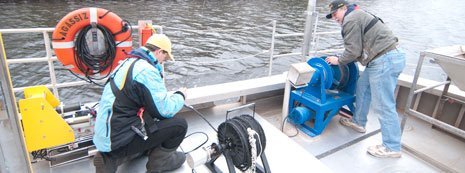Computer-based first-principles kinetic modeling of degradation pathways and byproduct fates in aqueous-phase advanced oxidation processes
Document Type
Article
Publication Date
2014
Abstract
In this study, a computer-based first-principles kinetic model is developed to predict the degradation mechanisms and fates of intermediates and byproducts produced during aqueous-phase advanced oxidation processes (AOPs) for various organic compounds. The model contains a rule-based pathway generator to generate the reaction pathways, a reaction rate constant estimator to estimate the reaction rate constant for each reaction generated, a mechanistic reduction module to reduce the generated mechanisms, an ordinary differential equations generator and solver to solve the generated mechanisms and calculate the concentration profiles for all species, and a toxicity estimator to estimate the toxicity of major species and calculate time-dependent profiles of relative toxicity (i.e., concentration of species divided by toxicity value). We predict concentration profiles of acetone and trichloroethylene and their intermediates and byproducts in photolysis with hydrogen peroxide (i.e., UV/H2O2) and validate with experimental observations. The predicted concentration profiles for both parent compounds are consistent with experimental data. The calculated profiles of 96-h green algae chronic toxicity show that the overall toxicity decreases during the degradation process. These generated mechanisms also provide detailed and quantitative insights into the pathways for the formation and consumption of important intermediates and byproducts produced during AOPs. Our approach is sufficiently general to be applied to a wide range of contaminants.
Publication Title
Environmental Science & Technology
Recommended Citation
Guo, X.,
Minakata, D.,
Niu, J.,
&
Crittenden, J. C.
(2014).
Computer-based first-principles kinetic modeling of degradation pathways and byproduct fates in aqueous-phase advanced oxidation processes.
Environmental Science & Technology,
48(10), 5718-5725.
http://doi.org/10.1021/es500359g
Retrieved from: https://digitalcommons.mtu.edu/cee-fp/5


Publisher's Statement
Copyright © 2014, American Chemical Society. Publisher's version of record: https://doi.org/10.1021/es500359g